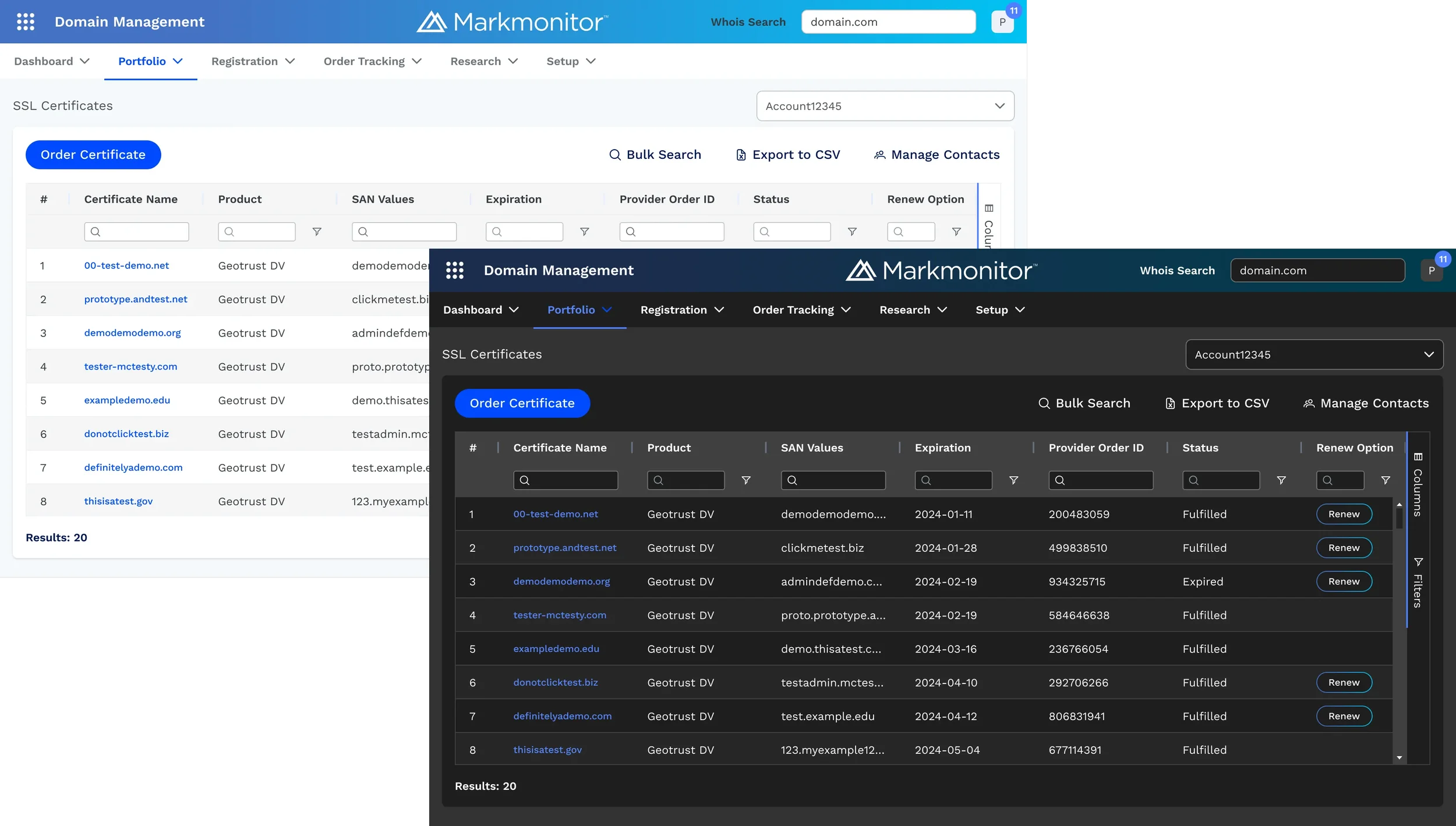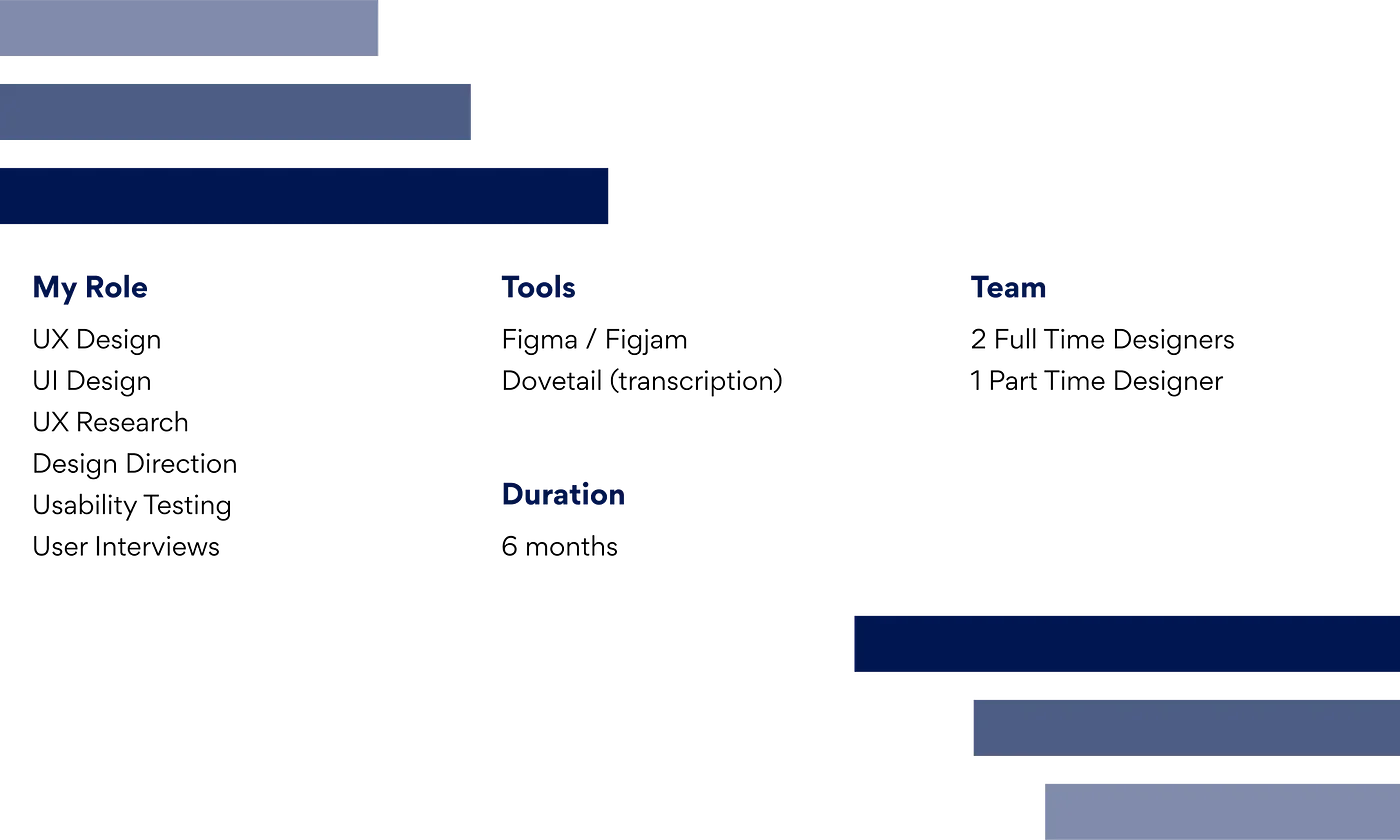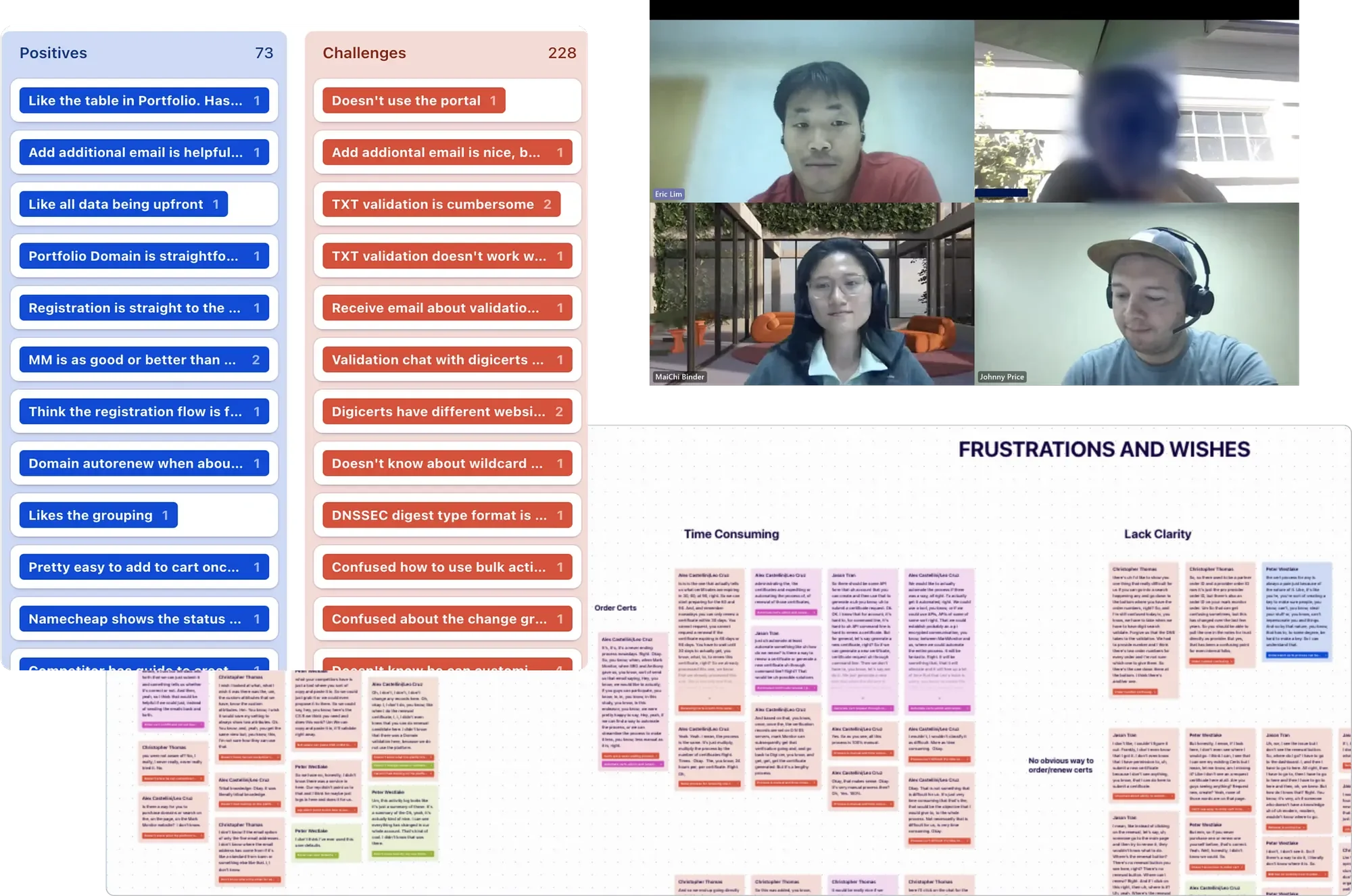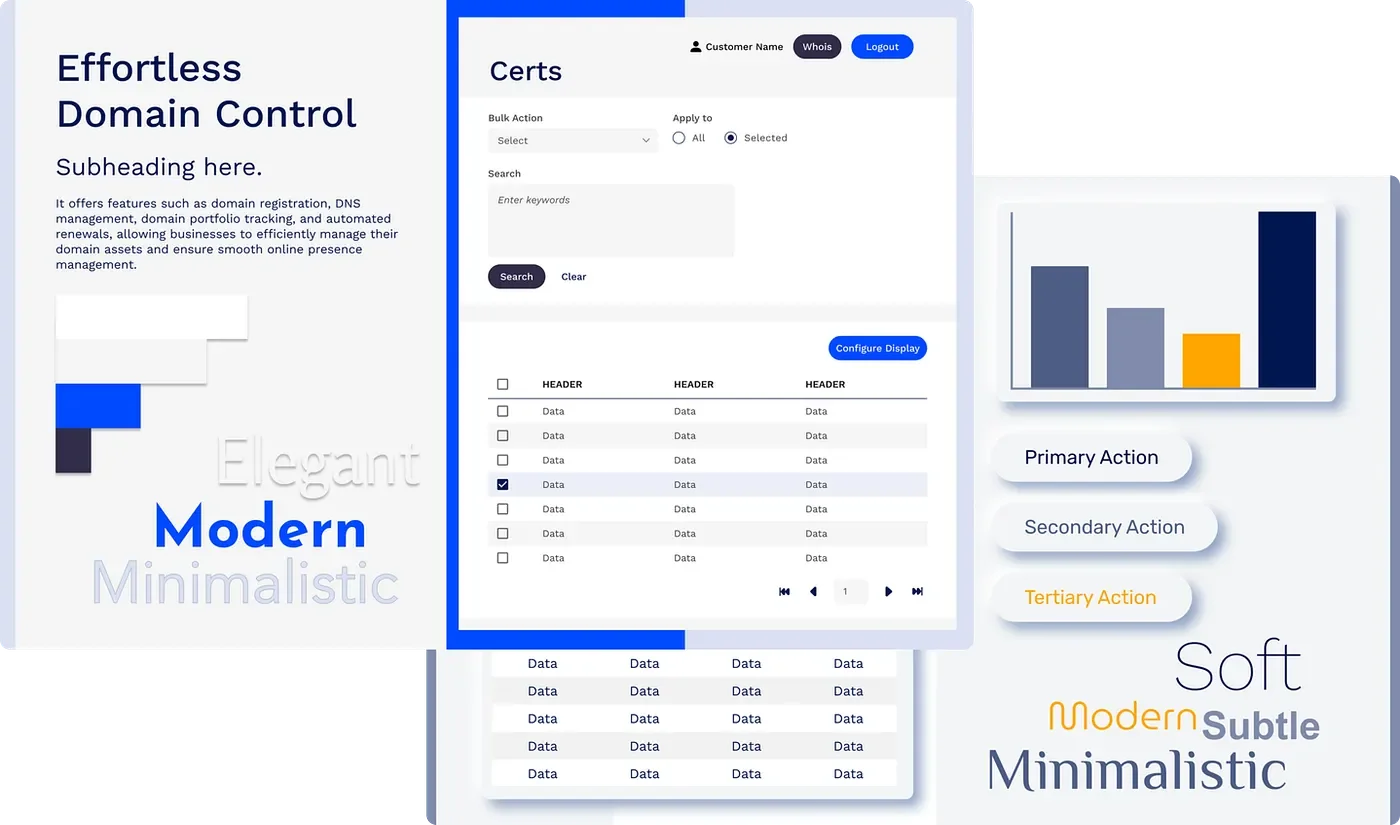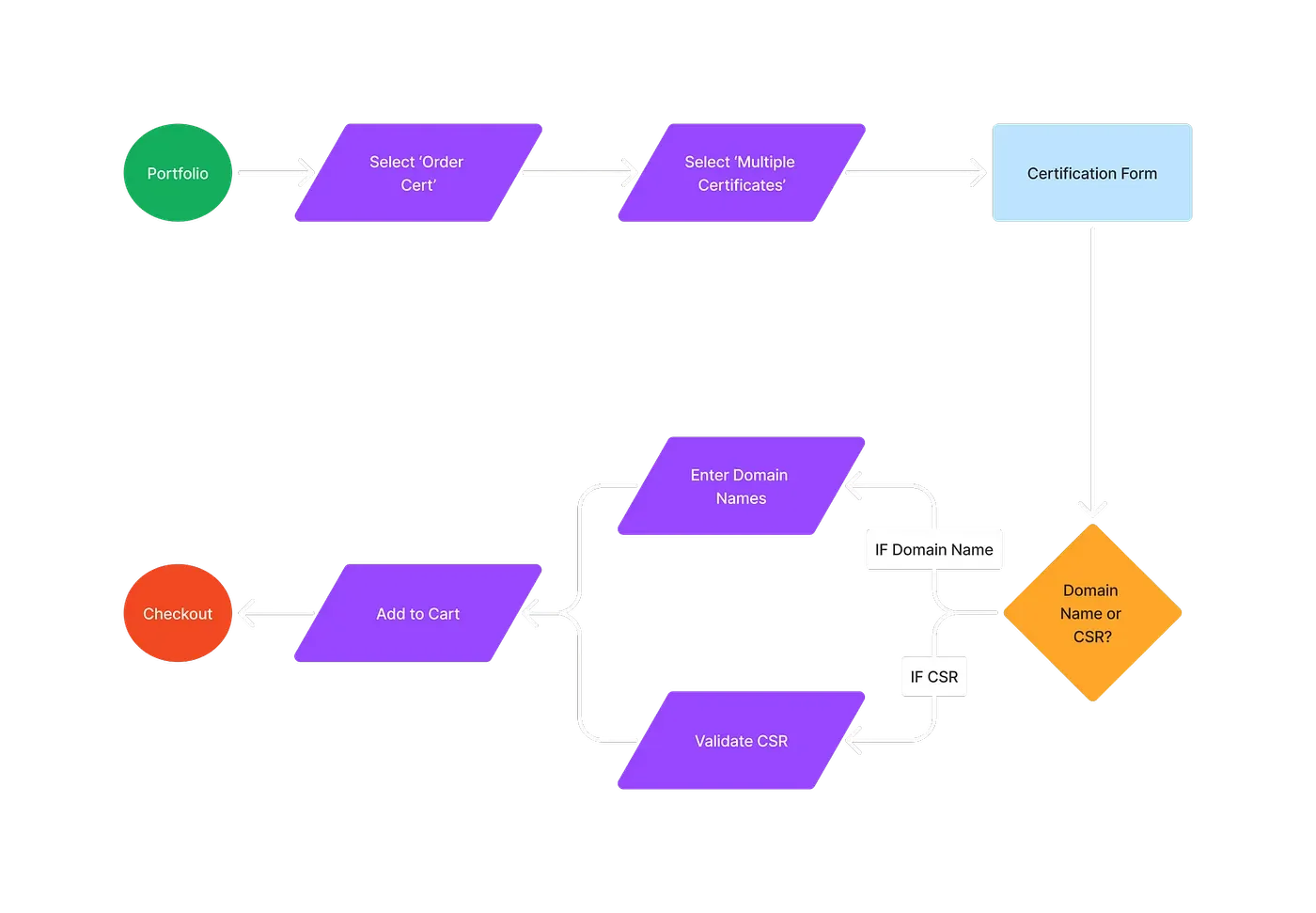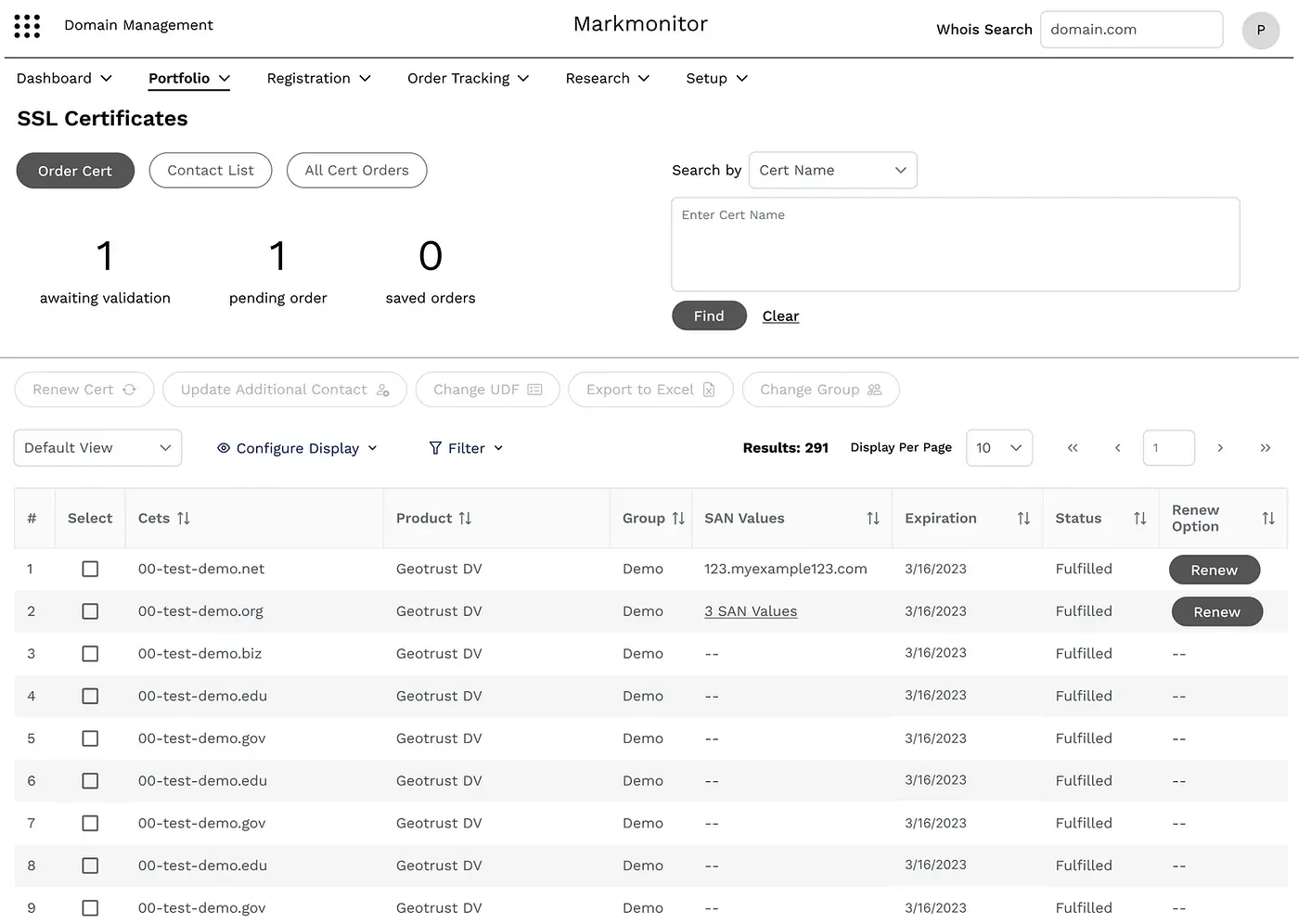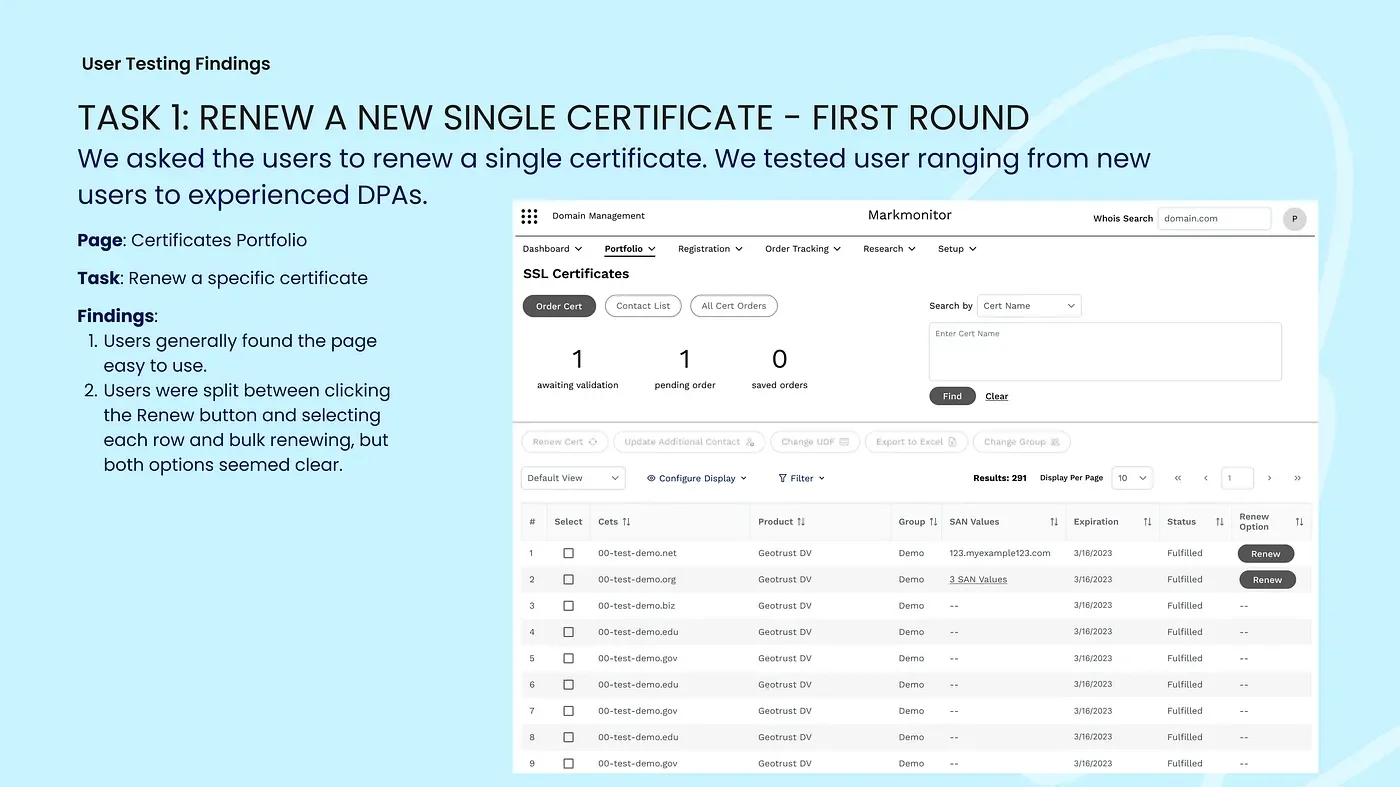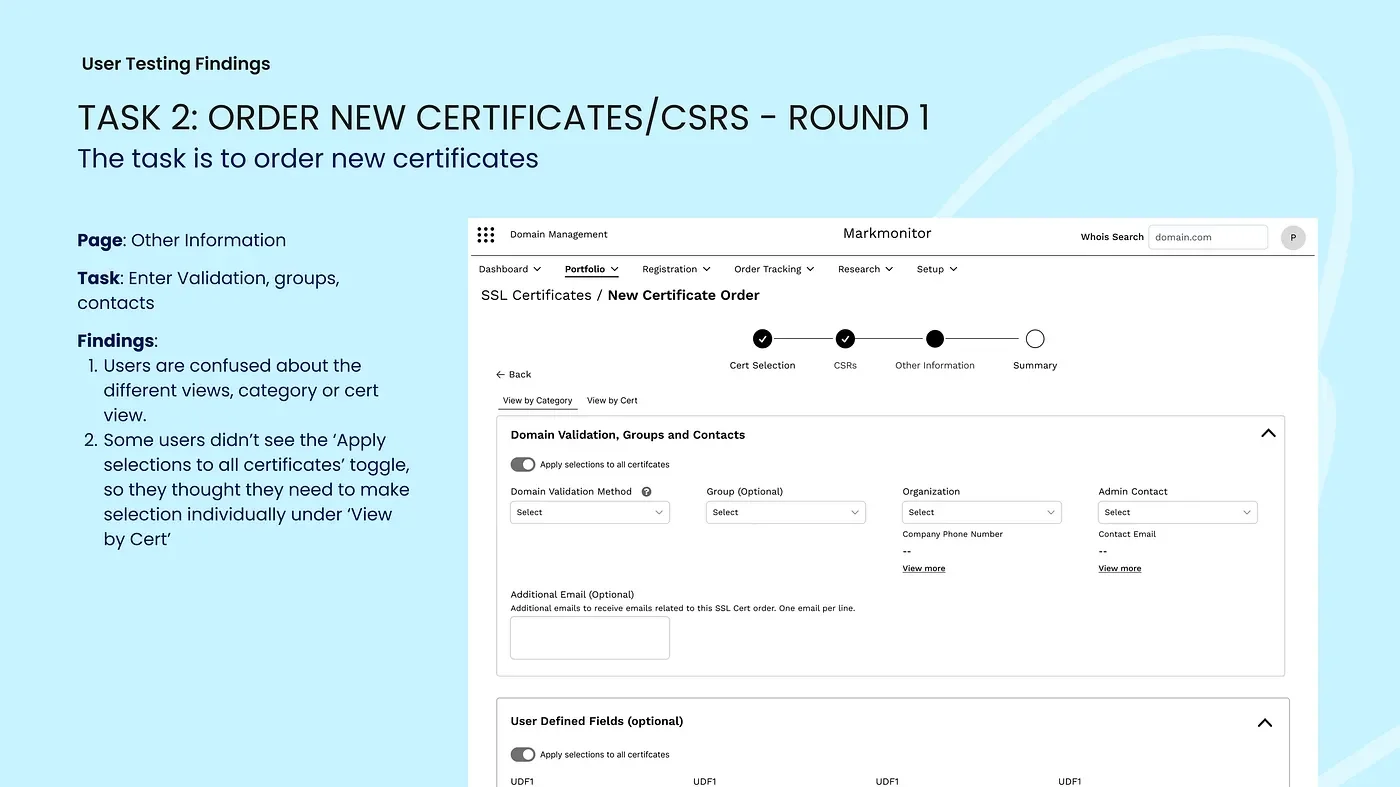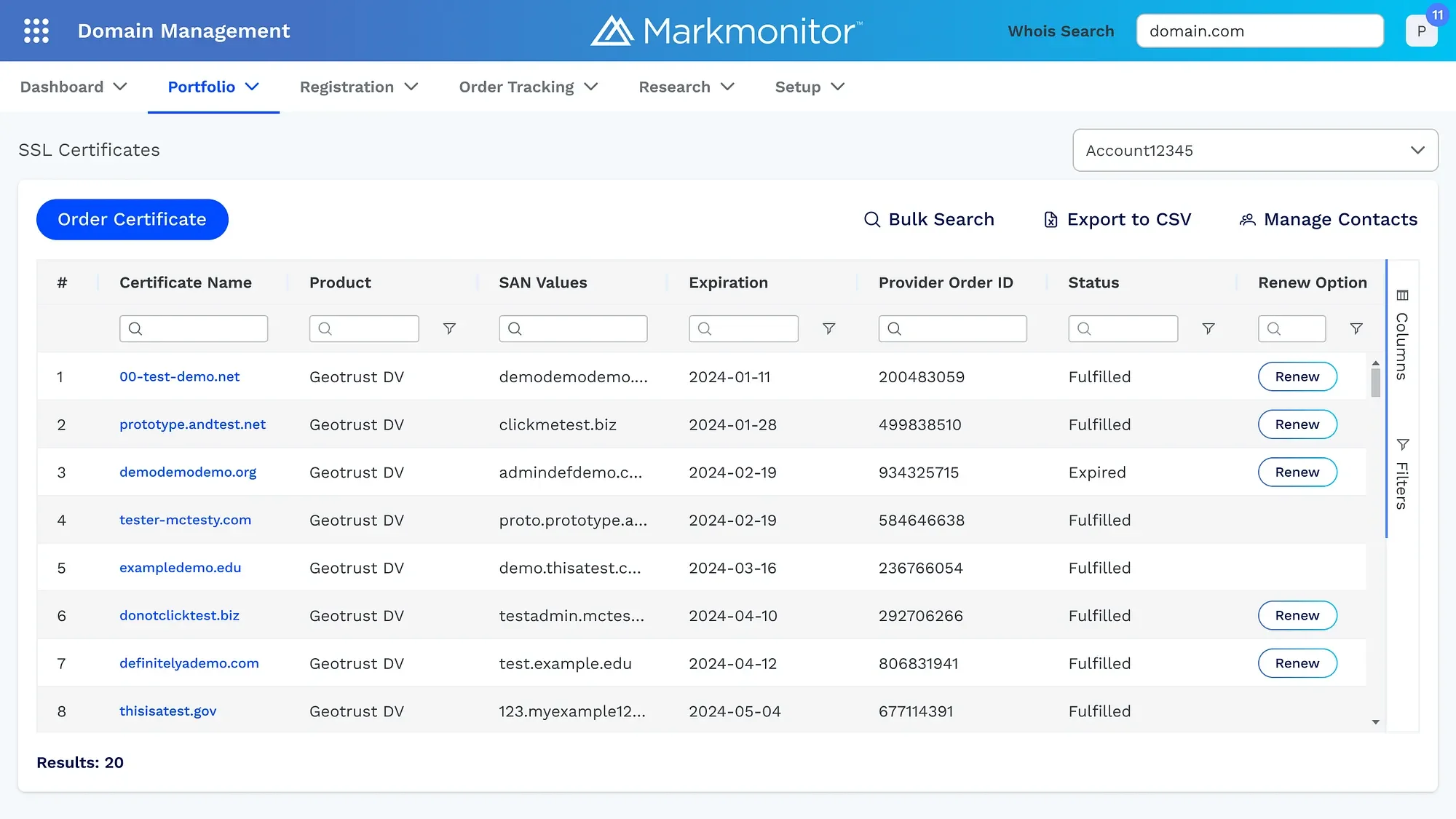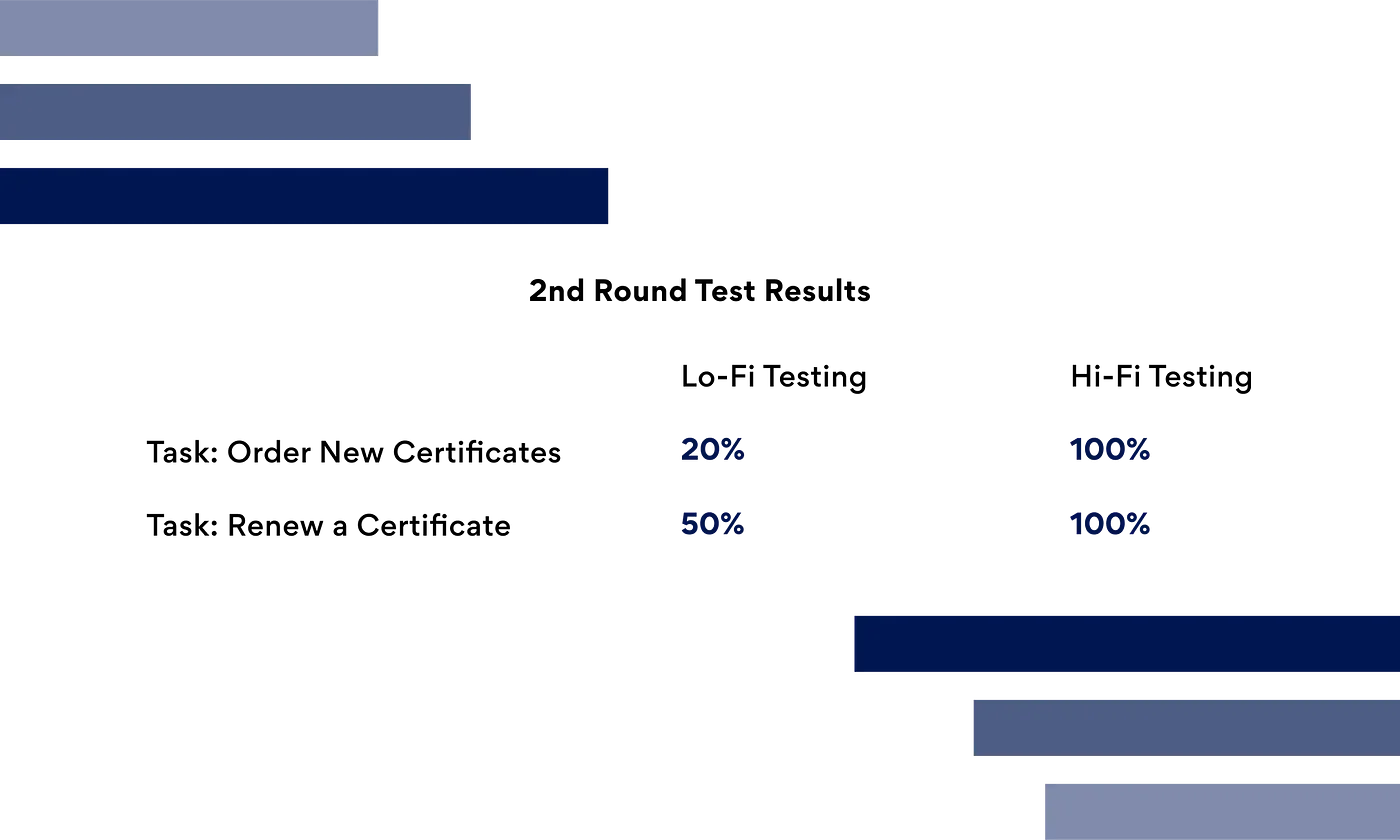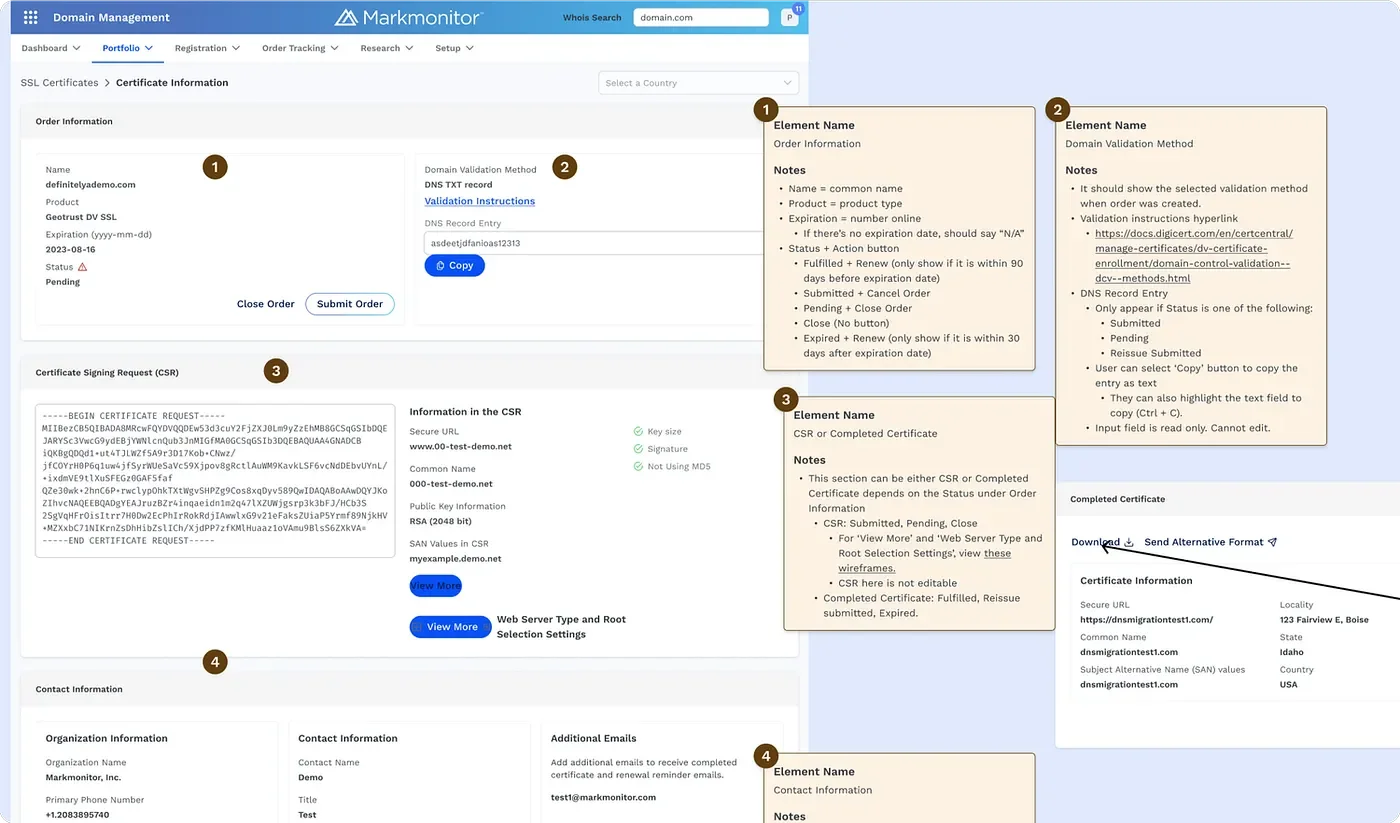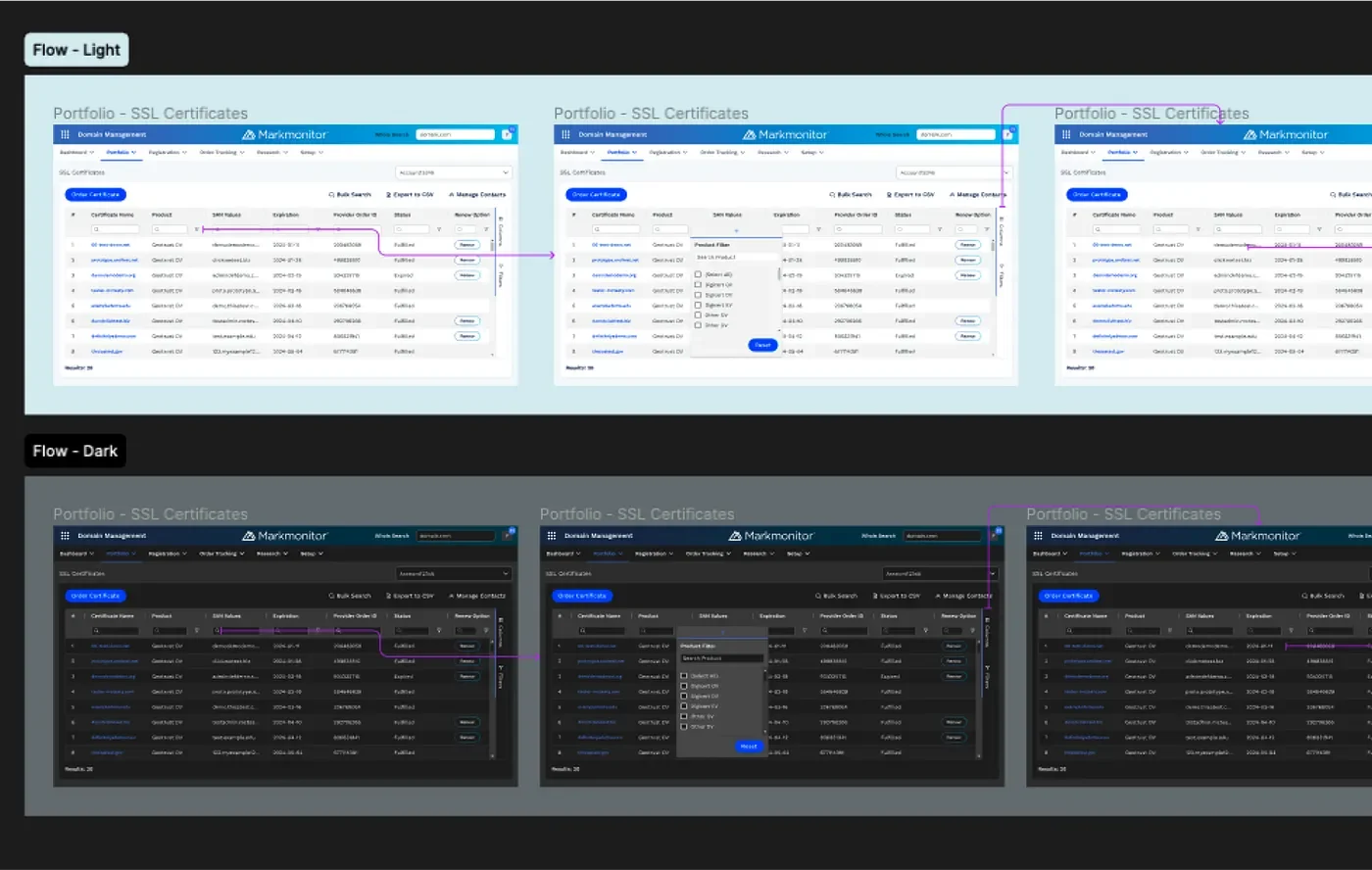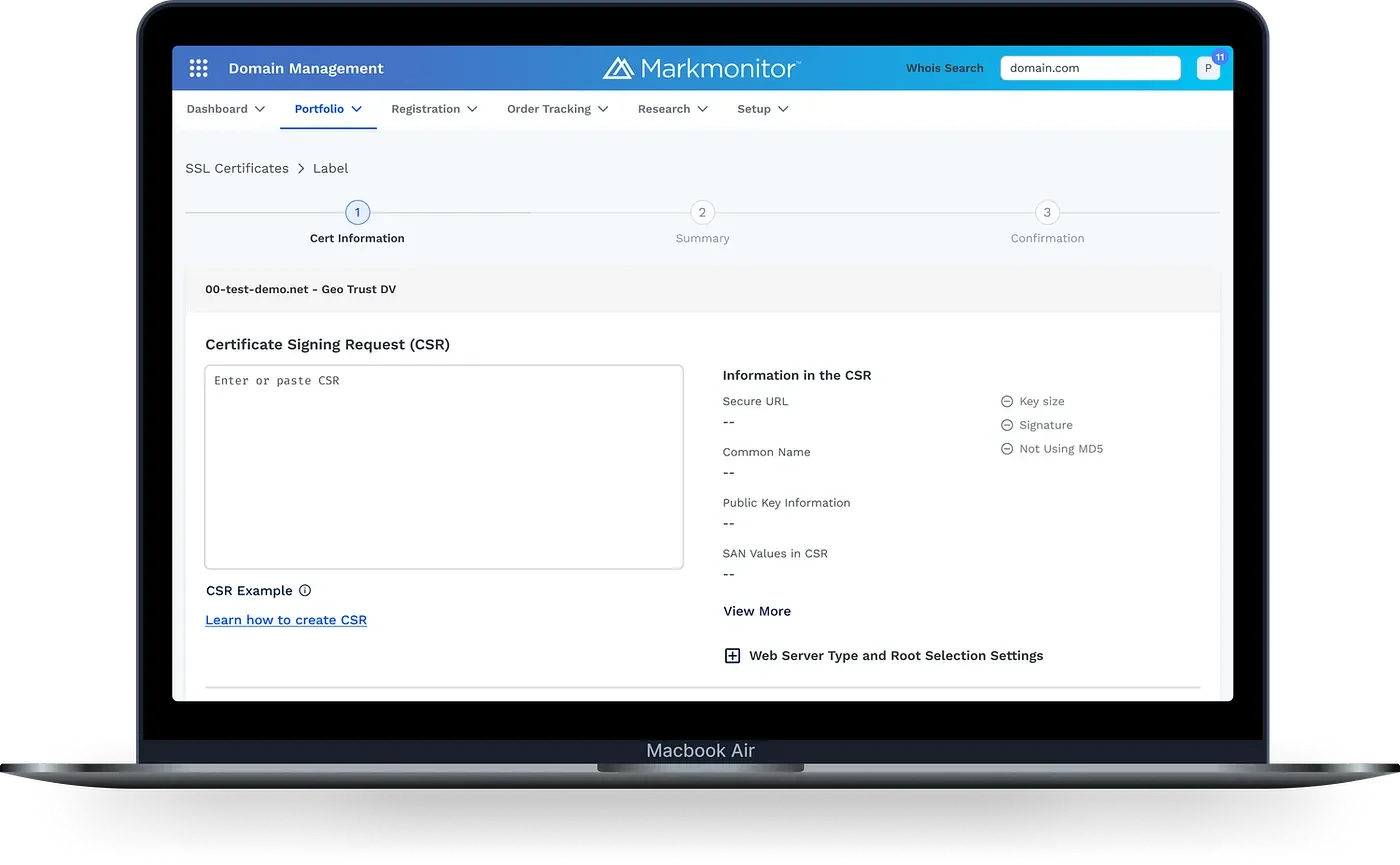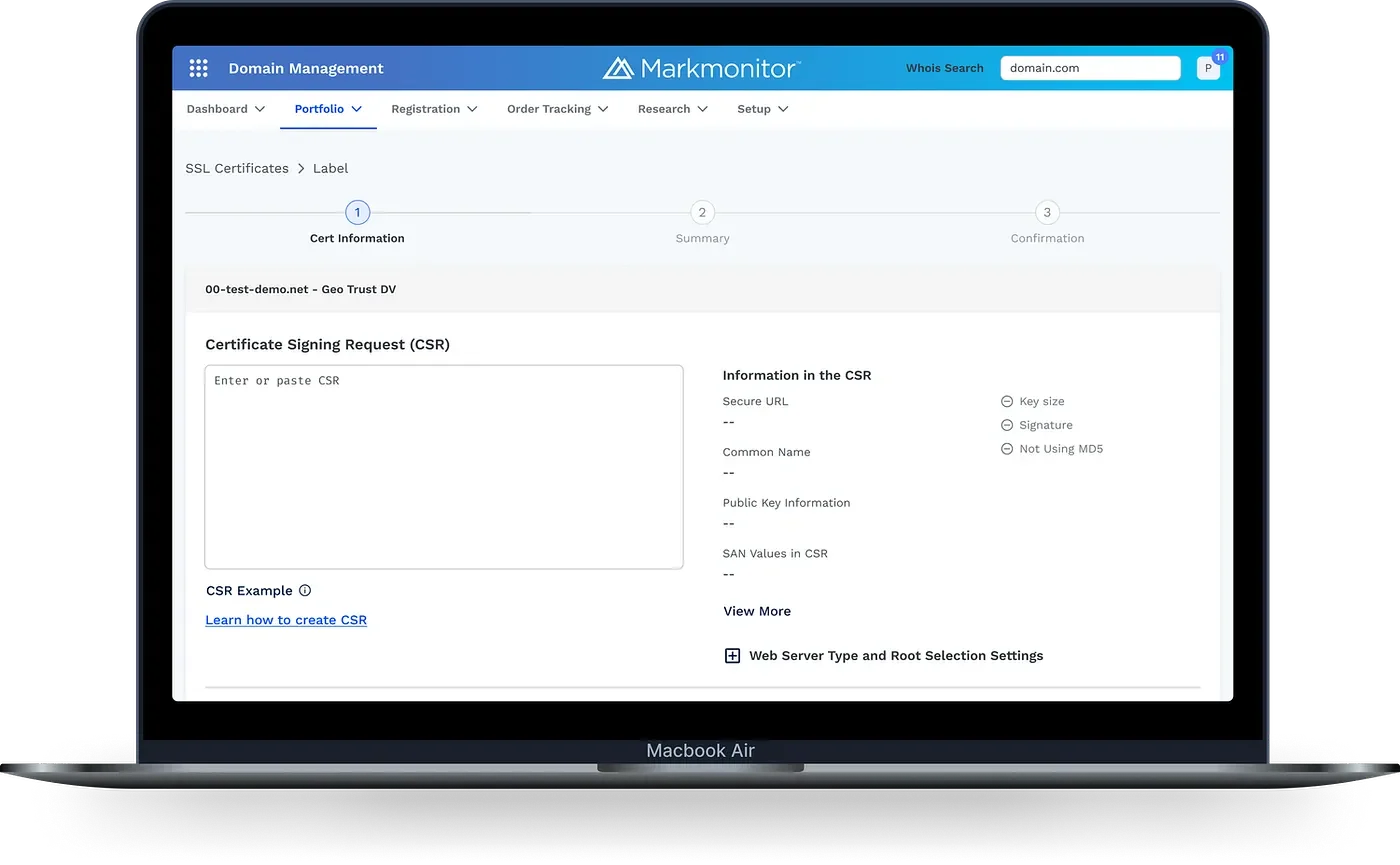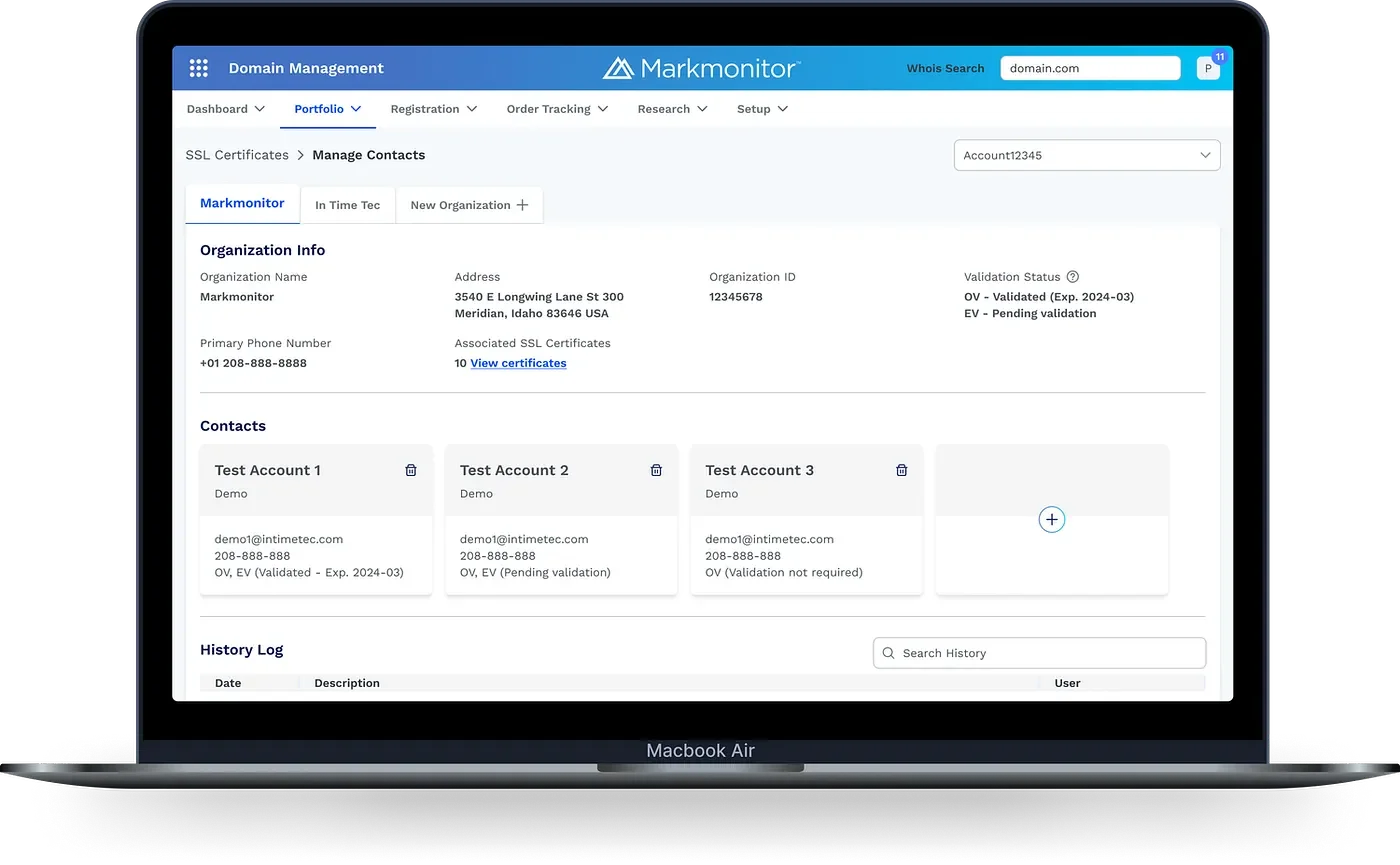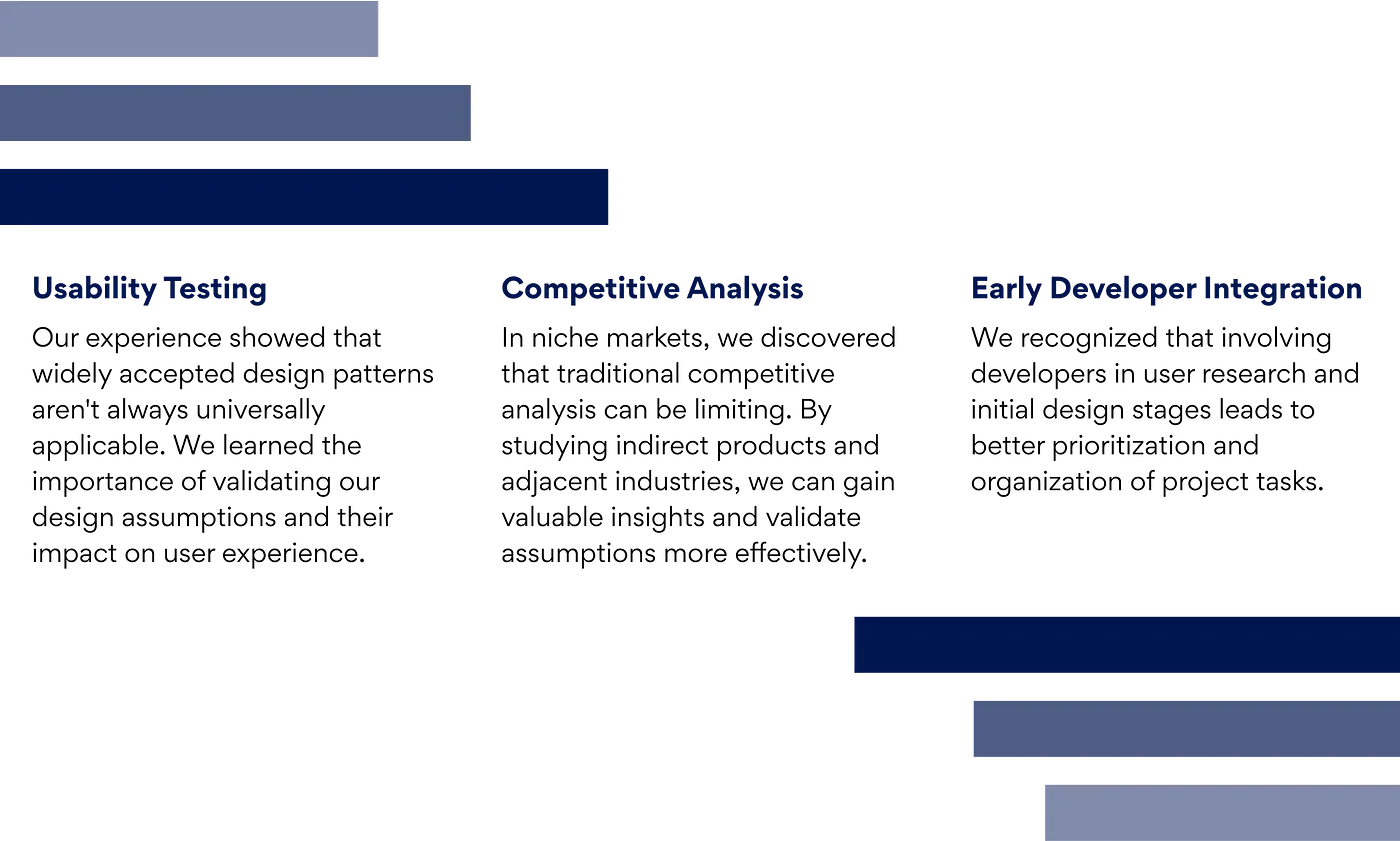Improving Task Completion Rates from 50% to 100%.
October 13th, 2024
Tesler's Law states that every system has a fixed amount of inherent complexity that cannot be eliminated but can only be shifted between the system and the user.
How do we decide how much to take on ourselves and how much to pass on to the users?
MarkMonitor has been a top provider of brand protection solutions since 1999. They offer services like domain management and anti-counterfeiting to help businesses protect their brands online.
The Challenge:
Markmonitor’s outdated domain management platform was struggling to accomplish its purpose of empowering users to independently handle their company’s domain-related tasks.
The cluttered, inconsistent interface forced users to rely heavily on Domain Portfolio Advisors for basic tasks, defeating the platform's self-service purpose and preventing advisors from focusing on strategic work.
We needed to create an intuitive solution that empowers users to manage domains independently while freeing advisors to provide higher-value guidance.
D I S C O V E R
<>
D I S C O V E R <>
We needed to find out where the troublesome parts of the process were, otherwise we would be designing in the dark.
To avoid designing blind, we conducted interviews with Domain Portfolio Advisors, Individual Users, and product experts. These conversations validated assumptions and revealed new insights that guided our direction.
The most common challenges were:
“I don’t see anything, that I can do here [Portfolio/Certs] to submit a certificate… I just email a rep and asked him generate a new certificate for us and after that I just renew it.”
1. Users were not aware they could order/renew certificates on the portal.
2. Ordering certificates is a time consuming process.
“I have to go through several pages…in order to complete the process, where compared to [competitor] I can just go in and in one page, I can just go all the way down and submit.”
3. Having two separate lists to manage in both Domain Management and Hosted Services is frustrating.
“In most cases, I have to go to Domain Management to find out if we own the Domain and then go to Hosted Services to actually manage it, but the lists aren’t the same.“
We then analyzed all of our interview data and developed personas that highlighted the users’ real friction points, motivations, and goals.
D E F I N E
<>
D E F I N E <>
With user needs identified, we tackled the visual design. Stakeholders wanted something "modern," "pretty," and "striking"—vague terms that needed clarification. We used the 20-second gut test and style tile sessions to align on a shared vision.
Once we decided on a design direction, we mapped out the detailed steps of a few of the core tasks of the app.
D E V E L O P
<>
D E V E L O P <>
Using our findings from the interviews and user flows, we started ideating lo-fi wireframes. We regularly reviewed them with our stakeholders to validate the information architecture and flow.
We validated our assumptions and made adjustments based on the user’s feedback through 2 rounds of usability testing sessions. Here are a few key findings:
Using the feedback from the usability test and the style direction established with the stakeholders, we refined our mockups and performed another round of usability testing.
We tested and compared the completion rates for our primary tasks in the current state of the app versus the completion rates in our final usability testing session with our proposed solution. Here are the results:
D E L I V E R
<>
D E L I V E R <>
We wanted to get ahead of potential pitfalls in the development handoff process so we identified a few opportunities to go the extra mile.
Second, we needed to be sure that the complex process of ordering multiple certifications was easily understandable. Our solution was to carefully map out each step in our prototype.
First, the lack of early developer input risked creating designs that might not be technically feasible. To address this, we created robust documentation for each element and its requirements.
Final Product
Key Learnings and Takeaways
Thanks for taking the time to check out my case study!
Please send me any questions or feedback. I’m always excited to learn something new and make new connections!

